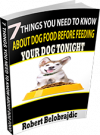Why Are So Many Dogs Overweight?

Malnutrition. When you hear that word, you most likely think of an animal that is starving: ribs sticking out, no meat on the bones, as they say. BUT did you know that, according to the Pet food Industry Association of Australia, OBESITY IS CONSIDERED THE MOST COMMON FORM OF MALNUTRITION IN DOGS AND CATS IN AUSTRALIA?
In 2005, researchers carried out a study: “Prevalence of obesity in dogs examined by Australian veterinary practices and the risk factors involved.” Of the 2,6661 dogs that were part of the responses to the questionnaire, 33.5% were overweight by professional standards, and 7.6% were obese.
That’s 41%.
They found some interesting things in this sample:
· Dogs over 10 years old were more at risk for obesity
· Dogs that lived in rural and semi-rural areas were more at risk than dogs living in urban or suburban areas.
· Neutered dogs tended to be more overweight than dogs left intact
But, above all, the NUMBER ONE REASON WHY SO MANY DOGS ARE OVERWEIGHT:
Dogs are being fed too much with too little exercise!
As of 2018, they believe 59% of dogs are obese worldwide.
Just like with humans, animals need to be burning just as much energy, (or more if they need to lose weight) than the number of calories they are consuming. If not, they will gain weight.
In a survey conducted during January and February 2018, pet owners from China, Brazil, Russia, United Kingdom and the United States were surveyed. Only 20% of them said they actually measured how much food they were giving their dog every day and 54% said they would give their dog food if they “begged for it.”
While 59% of dogs are thought to be obese, only 24% of owners who took this survey thought of their dog as overweight…yet 64% admitted their dog showed some sign of being overweight (couldn’t feel the rib, had to loosen the collar, etc.).
Start by getting yourself a measuring cup and looking at the food label of your dog’s diet. Are you feeding over what the bag says is recommended? IF you think yes, then cut back to what the bag recommends for your dog’s IDEAL weight, not their current weight, and increase your dog’s activity to help him lose weight.
IF you think you are feeding the daily recommendation, cut back on that while increasing exercise. Remember, that daily amount on the bag is a RECOMMENDATION! Your dog’s age (older dogs are more at risk of being obese as their metabolism slows and activity level drops), if they are desexed or not, how much exercise they are getting and any other health conditions, will affect how much food they need. IF you are unsure about how much to cut back, ask your veterinarian.
The Secret Killer: TREATS
Chances are your dog gets more than his daily ration of food, however. And this is the secret killer: TREATS. Many dogs are getting the right amount of kibble but, are fat because of all the extras they are given throughout the day. (Some independent surveys show that people treat their dogs between 6 and 9 times a day.) But what may seem like a small treat to you, is really a step closer to obesity for your dog.
For example:
50grams of ham is the equivalent of a human eating a donut. Might not seem too bad. But just 30grams of cheese (a very popular treat for dogs in training) is the equivalent of two donuts. That’s just one package of string cheese…Put another way, for a 10kg dog, that 30grams of cheese is the same as eating one and a half hamburgers.
50 grams of bread and 30 grams of chips also equals two donuts. 60grams of hot dog is like three donuts. If you feed an entire hot dog to a 10kg dog, it’s the same as two and a half hamburgers. And one human cookie to that same 10kg dog equals a hamburger.
But, what about dog treats? They are WORSE! 60 grams of liver treats or 50 grams of dried pig ear are the equivalent of three donuts. 80grams of bacon strip treats are equal to four donuts.
And one you may not suspect? 200 grams of a rawhide bone is equivalent to a human eating 10 DONUTS!
Let’s say your dog’s day looks a lot like this:
· In the morning your dog has breakfast, that you may or may not have measured.
· He gets a bit of toast from your kid (2 donuts, not to mention the butter on the toast!)
· He then goes to training and goes through 100grams of liver treats and 2 string cheeses (10 donuts)
· After that he comes home and has his dinner (again may or may not be measured)
· You give him his rawhide to chew on after that (10 donuts).
Your dog ate 22 donuts just in treats alone in ONE DAY!
Based on these numbers, it’s easy to see how the calories can quickly rack up for your dog over the day. Even with moderate exercise, your dog will probably still end up getting obese if fed in this matter consistently.
The best thing you can do is make sure you are measuring and keeping track of her regular food rationing and be smart about the treats you choose to train with. Many trainers use their dog’s daily kibble ration as training treats, to cut down on extra food intake. Making sure your dog is getting enough exercise is the other important piece of the puzzle.
Keeping your dog at a healthy weight will lower the risks of a myriad of health issues: meaning your dog will live a longer, healthier life and you will have less vet bills, two very good reasons to work on getting your dog’s weight under control.







